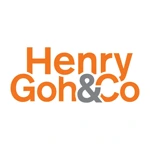
As part of Singapore’s continuous commitment to regularly review its intellectual property regimes to ensure that they are progressive and world-class, Singapore has signed and acceded to the Locarno Agreement Establishing an International Classification for Industrial Designs on 19 December 2019. The Locarno Agreement entered into force in Singapore on 19 March 2020.
The Intellectual Property Office of Singapore (“IPOS”) recognizes the importance of intellectual property as an increasingly crucial input for growth which then positively impacts jobs, development and social vibrancy. With the accession to the Locarno Agreement, designers will get greater assurance in industrial design protection under the business-friendly intellectual property regime as the processes before IPOS will be aligned to international standards and practices to help designers better access markets in the region and beyond.
The Locarno Agreement establishes an international standardized classification system for industrial designs, which is the Locarno Classification, that simplifies the search process of designs and identifies the class a work would fall under when filing for protection. The Locarno Classification is solely of an administrative character and does not bind the contracting countries as regards the nature and scope of protection afforded to the design in those countries. By adopting the international standard, there will be consistency in application processes as applicants do not need to re-categorize their Singapore applications to ensure conformity to the international standard.
In Singapore, there has been a year-on-year increase in applications for international design registration under the Hague Agreement. Meanwhile, the average number of national design applications in Singapore from 2016 to 2018 is about 1,300 per year. In 2018, local applicants formed the top filers of national design applications in Singapore, followed by Japan and the United States. The top key filing areas were applications for designs for recording, communication or information retrieval equipment followed by articles of adornment and packages and containers for the transport or handling of goods. It is hoped that the alignment in the classification standards and international practices will bolster the filing statistics and attract a healthier growth in the number of national as well as international design filings across all industries.



